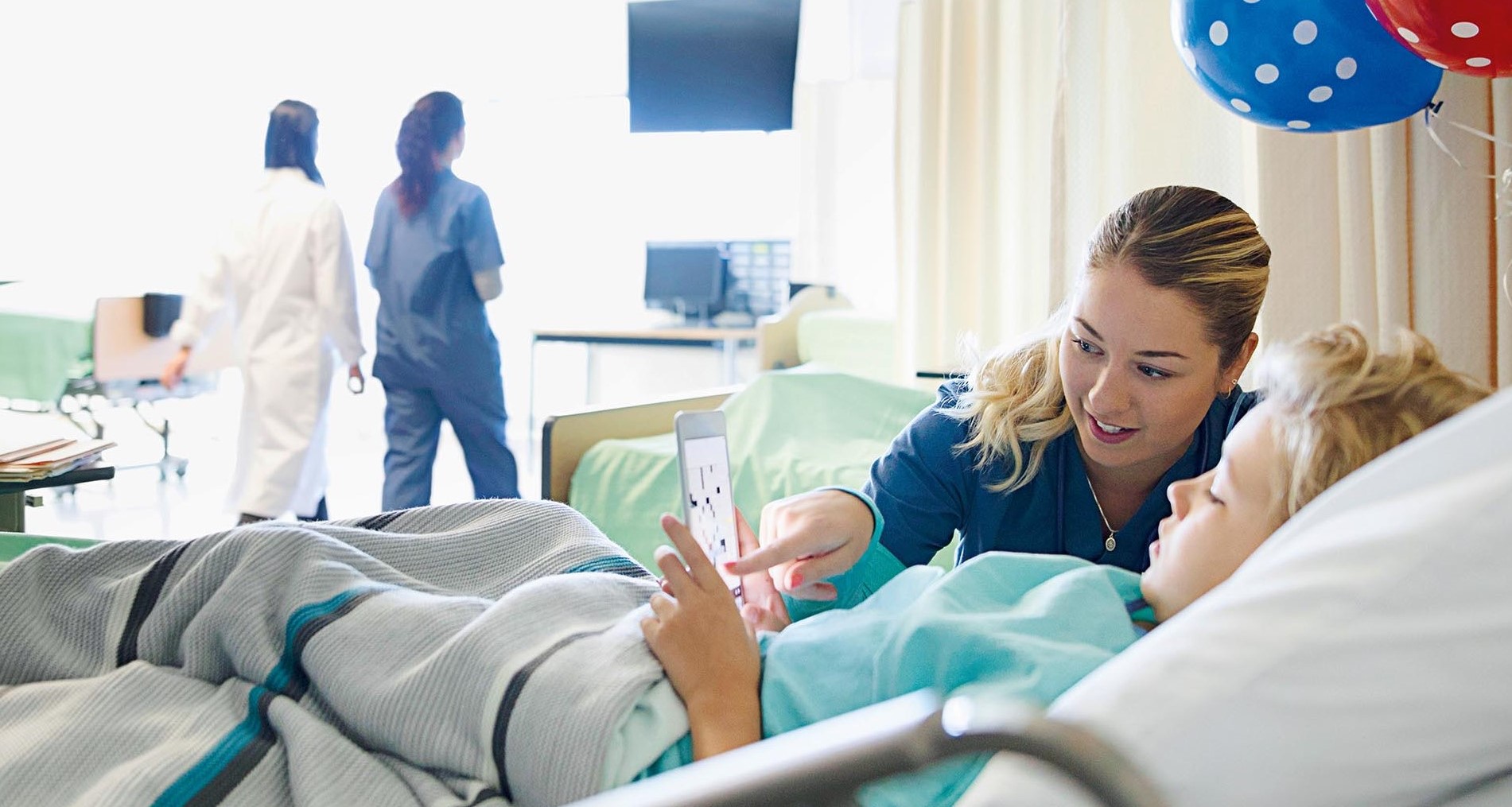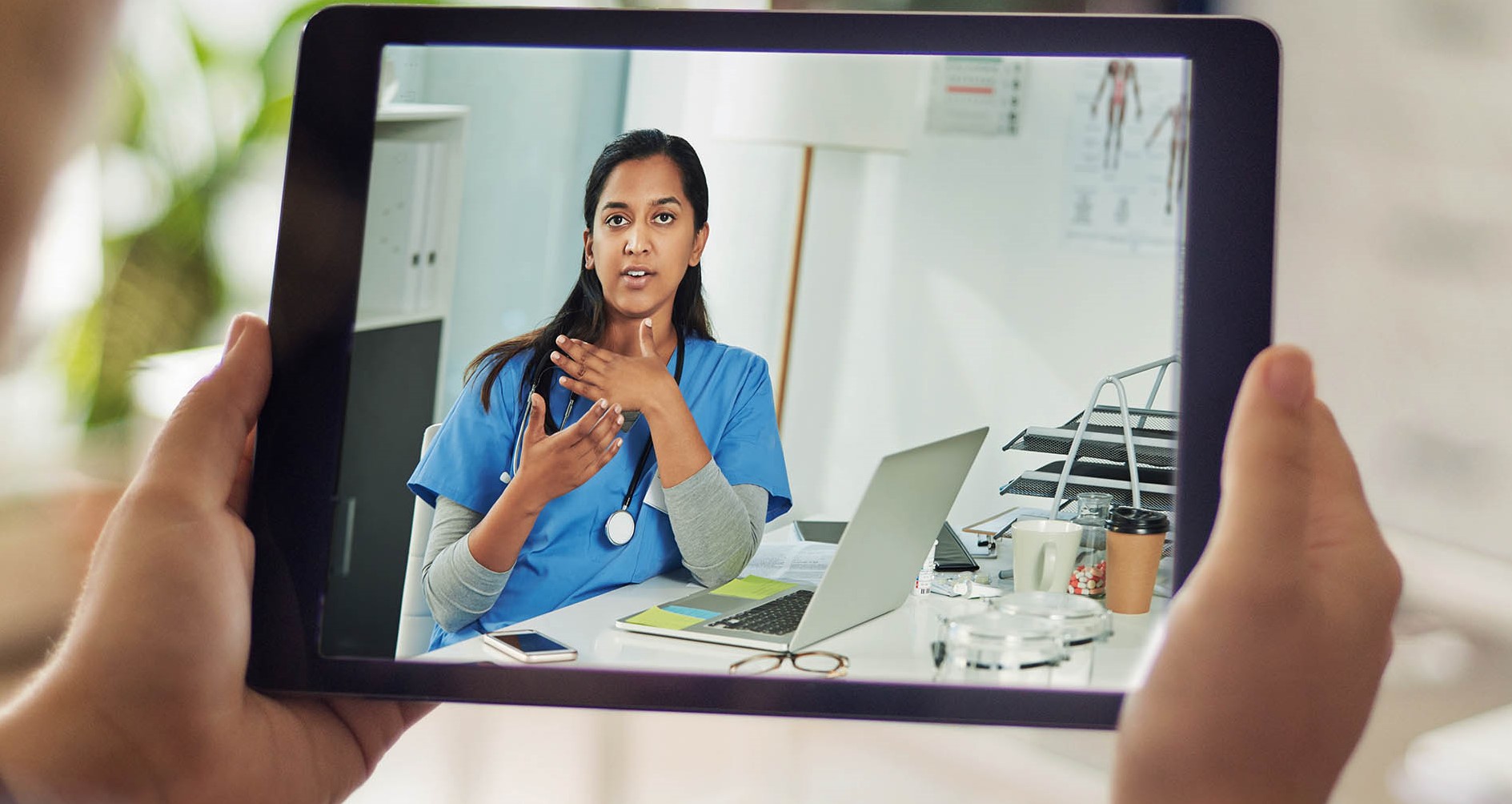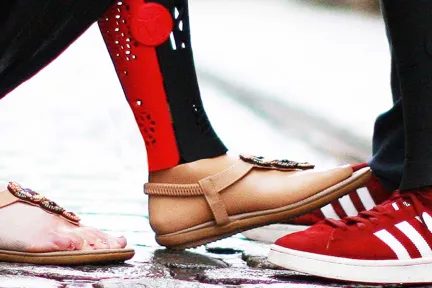Digital health as an experience
GE Healthcare’s Global Design team brings together designers and researchers studying innovation, technology and social behavior.
The team started out designing medical equipment but then broadened its scope to designing spaces, then patient and medical staff experiences. Interview with Marie Bachoc, Design Thinking Program Manager, GE Healthcare.
What kind of behavioral innovations are you working on?
One example would be our efforts to create a natural relationship between patients and hospitals. Patients who don’t have a connection with hospitals are less likely to go there and less inclined to take a proactive approach to their health. We’re looking at the processes taking place in all stages of a hospital visit, and we’re trying to remove the friction that patients can encounter. The journey from home to hospital, check-in, hospital stay, discharge and return journey home are phases that can connect in a fluid way. A natural relationship also involves providing users with useful, contextualized information.
For example, virtual reality can give patients an active understanding of medical procedures, help to explain a diagnosis and tailor the way information is conveyed depending on their age, culture and where they live.

Where healthcare resources are located and how to access them are important aspects of the care pathway
Absolutely! The idea is to ensure that healthcare can be accessed everywhere. We are seeing many innovations in the fields of remote medicine and connected accessories. A few years ago, we designed an innovative and portable ultrasound solution called Vscan, and we are continuing to explore solutions to make healthcare much more mobile and accessible. To complement those initiatives, we are working on geolocation within hospitals, so that patients know exactly where they need to be and at what time. It is also important to rethink a hospital’s spaces, organizing more efficient, integrated care pathways that are suited to specific complaints, so that all the necessary examinations can be completed in one day. This would reduce waiting times, including time spent waiting for results, which is generally a source ofanxiety for patients.
We’re looking at ways of using virtual reality to give patients a more active understanding of medical procedures.
When we talk about the care pathway, we think about how specialists dealing with a patient work with each other...
This relates to collective intelligence and how we can use the power of communities and data. A digital twin of the patient, featuring all of his or her history and medical data, could be accessed remotely by the medical team and the various specialists at all times. We can imagine something similar for a piece of equipment. This would be a good way of knowing exactly what the status of a device is and how it could be improved. All data collected from these digital twins, all that augmented intelligence, could form the basis of predictive models and provide assistance with clinical decisions. The data can be collected from numerous sources.
of people believe that wearable medical devices will have a considerable impact on the management of their health by 2030.
(Source: Frost & Sullivan)
Doesn’t that raise confidentiality issues?
Of course, because personal data is highly sensitive. But by ensuring that it’s anonymous, we can create a marketplace where data can be shared and transferred or even bought and sold by participants in the medical industry. We need to understand the context in which the data has been generated before we can use them, but we don’t need to know who it relates to. Anonymity would therefore allow us to use this data as a source of knowledge and expertise. These are some of the promising areas in our view. Basically, we have gone from a product-based model to a workflow and process-based model. The solutions we are developing are increasingly inclusive and collaborative, because they are used by both patients and medical staff. We aren’t the only ones moving in that direction, and that’s good news! There are a lot of opportunities to improve the experience of patients and caregivers within hospitals.


